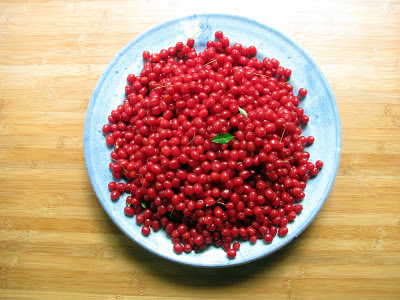beak full of dragonfly
a summer tanager calls
ki-ti-tuk ki-ti-tuk!
As I walk up to our front gate, I spot a dragonfly with beautiful gold tipped wings. Suddenly, a flash of red lands on our low bamboo fence. At first I think it's a male Cardinal, but this bird doesn't have a crest. Ah, he's that Summer Tanager we spotted a few weeks ago, throwing himself at his reflection in our windows. Now he looks comical with dragonfly wings sticking out of his stumpy beak. As he works on consuming the insect, he repeatedly makes a sound like ki-ti-tuk! Then he's off before I can get my camera out, flitting from tree to tree and warbling. His song has four distinct phrases that sounds a little like an American Robin.
Excited to see him again, I follow him around the house and manage to get one good photograph. He's easy to spot with all that bright red against green. In fact he's the same color as the goumi berries on the nearby bush. Scientists say that the color of bird's feathers comes from their diet and we know that the Summer Tanager mainly eats berries, but also insects, so maybe he's been eating goumi berries as well as dragonflies.


















